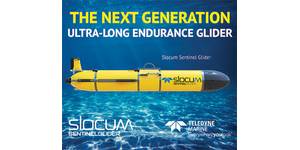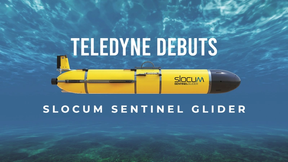-
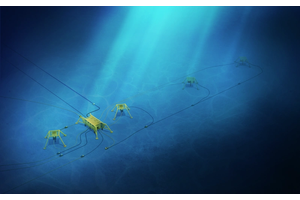
Russia is Developing Subsea Production Systems
The Russian Ministry of Industry and Trade is working with Gazprom and several Russian research institutions to develop domestic subsea production systems for prototype production in 2019 and testing in 2020. The initiative is underway as the country aims to reduce its dependence on imports in its oil and gas industry, specifically in natural gas liquefaction projects. Subsea production systems enable hydrocarbon production in severe climatic conditions…
-
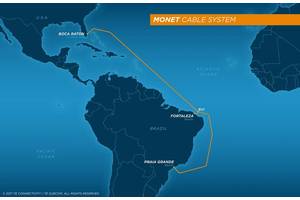
Monet Cable System Ready for Service
A 10,556 kilometer submarine cable enhancing connectivity from the United States to Brazil has been completed and is ready for service. Commercial traffic via the intercontinental Monet Cable System is expected to commence shortly, announced project partners from the U.S., Brazil, Angola and Uruguay. Monet is owned by Google, telecom company and internet service provider Algar Telecom, wholesale telecom company Angola Cables and telecom company Antel…
-
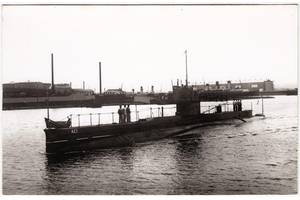
Fugro Joins Hunt for Long-lost WWI Sub
The first submarine to serve the Royal Australian Navy was lost without a trace on September 14, 1914 while patrolling waters off then German New Guinea. Despite several search attempts over the last century, the fate of the vessel and the men on board remains unknown to this day. As part of a new search mission to find the missing HMAS AE1 submarine and its crew, Dutch geosciences company Fugro said…
-
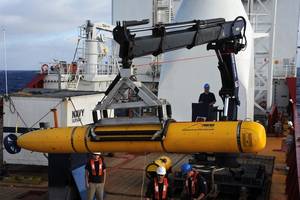
Unmanned Vehicles Aid Search for Argentine Sub
A fleet of four high-tech unmanned underwater vehicles (UUV) deployed by the U.S. Navy have joined ships and aircraft from more than a half dozen countries to search for an Argentine navy submarine missing with 44 submariners on board in the southern Atlantic. One Bluefin 12D (Deep) UUV and three Iver 580 UUVs operated by the U.S. Navy's recently-established Unmanned Undersea Vehicle Squadron 1, based in Pearl Harbor…
-
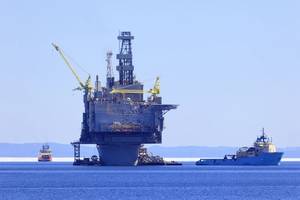
Kraken Sets out to Advance Offshore Digitalization
Oil and gas companies are no stranger to big data, technology and digital innovation, but Canada based marine technology company Kraken Robotics Inc. believes the industry has yet to take full advantage of the opportunities that derive from using big data and robotic technology in a meaningful way. A single drilling rig can generate terabytes of data every day, yet only a small fraction of it is used for decision-making, it said.
-
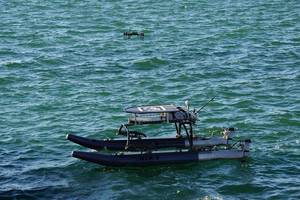
Unmanned Vehicles In, On and Above the Water
As part of the annual BlueTech Week in San Diego, attendees were given an opportunity to see several unmanned vehicle technologies in action. The main event was put on by a team consisting of Marine Advanced Research, Inc.; Planck Aerosystems, Inc.; and Teledyne Marine, Inc. (all with bases in California). Together, the team demonstrated multi-interoperability among five different unmanned systems on the water, in the air and subsea.
-
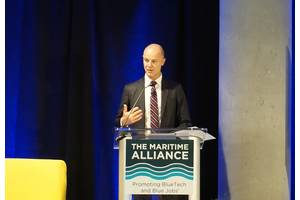
BlueTech Week: International Smart Collaboration in Focus
Delivering the keynote address to a packed room during the BlueTech Summit & Tech Expo in San Diego on November 8, Pål Narve Somdalen, Counselor for Trade and Industrial Affairs, Royal Norwegian Embassy, Washington D.C., discussed Norway’s role within the maritime, marine, energy and technology sectors, and touched upon areas for collaboration with partners in the U.S. and around the globe. Now in its ninth running…
-
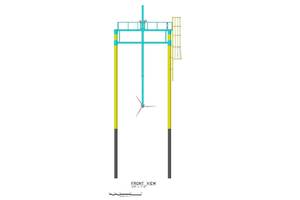
US Tidal Energy Test Site: Installation Set for Next Week
Installation work for a permanent tidal power test site, a first of its kind in the U.S., is expected to begin in the Cape Cod Canal next week. Having received final approval from the U.S. Army Corps of Engineers for the test site installation in September, the Marine Renewable Energy Collaborative (MRECo) said the Bourne Tidal Test Structure is slated for delivery in New Bedford on Friday, November 3, where it will be placed on a barge owned by AGM Marine, Inc.
-
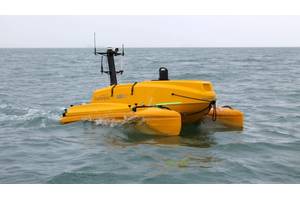
New ASV Delivered to University of Southampton
The first of ASV Global’s brand-new class of C-Cat vessels to roll off the production line has been delivered to the University of Southampton. The 3-meter autonomous catamaran, funded by an EPSRC RAS Capital Award, will be used by the university for scientific research and development of autonomous behaviors. The C-Cat 3 is “unlike any other vessel on the market,” according to Vince Dobbin, ASV Global Sales and Marketing Director.
-
Mæland Steps in as DeepOcean CEO
DeepOcean’s board of directors announced that company COO Ottar Mæland will take over the responsibilities as acting CEO of DeepOcean, succeeding current CEO Bart Heijermans, who has decided to step down. Heijermans, who led the company through an ownership change during his tenure as CEO, has decided to step down from his position effective November 18, 2017. He will remain on the company’s board as a nonexecutive director.
-
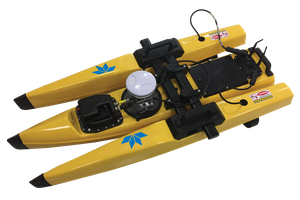
New Remotely Operated Hydrographic Survey Boat
Teledyne Oceanscience has introduced a new remotely operated hydrographic survey boat suited for inland waters such as streams, rivers and lakes. The new trimaran style Z-Boat 1250 is “sturdy enough for tough terrain but light enough to be one person portable,” according to Teledyne. The vehicle has a lightweight hull manufactured from acrylonitrile butadiene styrene (ABS) plastic, and is IP67 rated, which makes it well suited to survey in most water conditions.
-
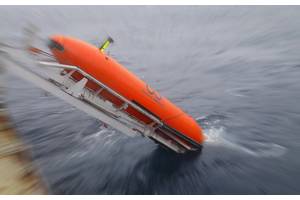
Six AUVs Dive Simultaneously at 5,000+ Meter Depths
A fleet of autonomous underwater vehicles (AUV) recently launched during a survey mission in the North Atlantic have completed the deepest known commercial dive performed by multiple AUVs simultaneously. The mission, carried out by seafloor monitoring, mapping and exploration firm Ocean Infinity, saw six Kongsberg HUGIN AUVs descend to ocean depths greater than 5,200 meters, reportedly a world’s first for this type of vehicle.
-
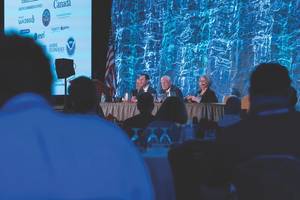
What's New at BlueTech Week?
BlueTech Week 2017 aims to bring together industry, academia and government in sunny southern California. Now in its ninth year, the annual event has grown to encompass seven events in five days, scheduled for November 6-10, 2017. MTR caught up with Michael Jones, president of The Maritime Alliance (TMA), to discuss ‘what’s new’ at this year’s event. How has BlueTech Week evolved over the years, and in what ways has it stayed the same?
-

The Quest to Find and Explore USS Indianapolis
Sunk by Japanese torpedoes near the end of World War II, heavy cruiser USS Indianapolis disappeared to the darkest depths of the Philippine Sea, where it remained undiscovered for more than 70 years. Recently a team of civilian researchers led by Microsoft co-founder Paul G. Allen set out equipped with an arsenal of high-tech search equipment on a mission to locate the historic vessel last seen on July 30, 1945.
-
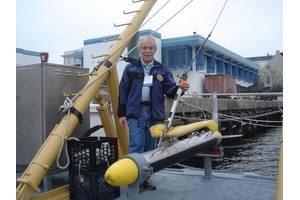
Klein's Side Scan Sonar, Then and Now
The company known today as Klein Marine Systems, Inc. has origins stretching back to the 1960s when Marty Klein, who many consider to be the father of side scan sonar, began building his own devices from his home in Lexington, Mass. As this iconic subsea technology company approaches 50, MTR speaks with Marty Klein as well as Klein Marine System’s general manager, Frank Cobis. When did you realize you were destined for a career in the subsea world? Marty Klein: Wow.
-
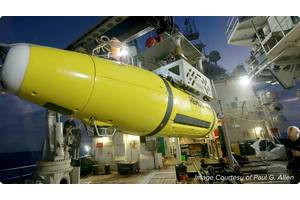
The AUV That Helped Find USS Indianapolis
A team of civilian researchers led Microsoft co-founder Paul Allen have found the wreck of the World War II heavy cruiser USS Indianapolis (CA 35), lost July 30, 1945. Aiding Allen’s team in the discovery was a 6,000-meter-rated autonomous underwater vehicle (AUV), the REMUS 6000, manufactured by Kongsberg Maritime subsidiary Hydroid Inc., which gathered the sonar data that helped locate the USS Indianapolis…
-
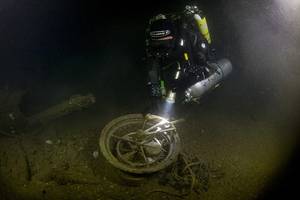
Telegraph Recovered from Lusitania Wreckage
More than 100 years after the sinking of the RMS Lusitania, divers have recovered yet another artifact from the wreckage of the historic ocean liner. The Lusitania was sailing from New York to Liverpool on May 7, 1915 when it was torpedoed by a German U-boat off the Head of Kinsale. A second explosion then led to the vessel’s sinking and the loss of 1,198 lives, marking a key moment in World War I history.
-
Seabed Geosolutions Wins Brazil Survey Work
Fugro said its joint venture with CGG has secured a contract from Petrobras for a 3D ocean bottom node (OBN) survey in the Brazilian Santos Basin. The seven month contract awarded to the survey firms’ joint venture Seabed Geosolutions is valued at around $90 million and is scheduled to commence at the end of the fourth quarter of 2017 or early 2018, Fugro said. According to Seabed Geosolutions CEO…
-
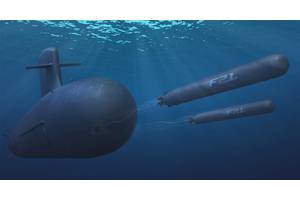
New Heavyweight Torpedo Enters Final Development
A new torpedo design being developed under the Artémis program, which aims to equip all French Navy nuclear submarines with new high-performance heavyweight torpedoes, has propelled into its final development phase with the recent completion of a successful round of test firing off the Mediterranean coast. The F21 torpedo is being developed by European naval defense and marine renewable energies technology company DCNS…
-
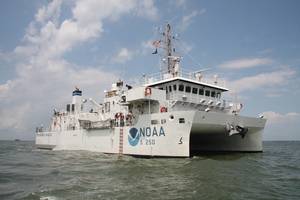
NOAA Hydrographic Survey Spending in Question
The National Oceanic and Atmospheric Administration (NOAA) needs to improve its strategy for analyzing costs and expanding private sector involvement in collecting hydrographic data, says a report from the U.S. Government Accountability Office (GAO). As one of its many duties, NOAA is tasked with collecting hydrographic data. This data, which is used in helping to create critical nautical charts, is either collected using NOAA’s own fleet of four survey vessels…
 February 2024
February 2024

The February 2024 edition of Marine Technology Reporter is focused on Oceanographic topics and technologies.
Read the Magazine
This issue sponsored by:

The Clock is Ticking on the Doomsday Glacier
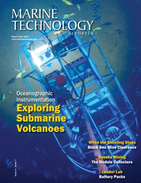
Marine Technology Reporter is the world's largest audited subsea industry publication serving the offshore energy, subsea defense and scientific communities.
Subscribe

